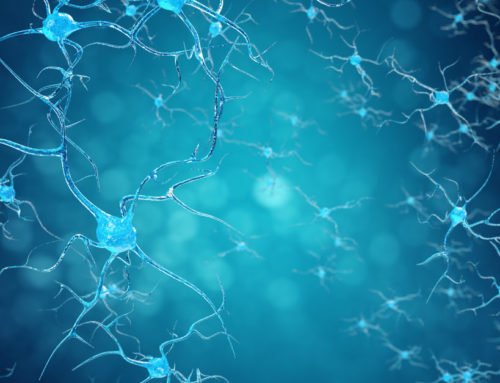When living with chronic pain, it can seem impossible to get moving. Yet again and again research demonstrates that movement is a critical component of successful pain management.
The thing is, not all movement is created equal. While some people with chronic pain may be able to immediately engage in exercise, others may need to start differently to see results.
Pain, Movement, and Anxiety
Imagine you have a musculoskeletal injury – a sprained ankle. During the first few weeks of your injury, you might accommodate your ankle by moving differently to keep weight off of it. But as the weeks turn to months, the pain does not subside and becomes chronic. So the accommodation turns into avoiding any movement at all.
Kinesiophobia – fear of movement – is common among people living with chronic pain. Specifically, many worry that movement will increase the pain they feel so they move less. But the opposite is true. Movement actually decreases sensations of pain. And recent research suggest that lack of movement is one of the main factors in the development of chronic pain.
In summary, less movement leads to more pain, which creates more anxiety around the pain and movement, not to mention poorer sleep quality.
This cycle repeats over and over again, contributing to disability, decreased physical function, and depression. And it applies to more than just those with a musculoskeletal injury. Other chronic pain conditions, such as fibromyalgia, migraine, and neuropathy, all can lead individuals into similar cycles.
In our healthcare system, the care plan for managing pain often includes physical activity or exercise. But when individuals become trapped in this cycle of pain and fear, it’s easy to understand their frustration. What is needed is education to create a more nuanced understanding of how pain works and the types physical activity that can break the pain and anxiety cycle.
Exercise and Movement are Not the Same
Physical activity is incredibly important for overall health, including improving mood, physical function, and sleep quality.
When we think physical activity, what often comes to mind is aerobic exercise or strength training – running, biking, playing a sport, or lifting weights. When you experience pain, you may also be “prescribed” a set of specific therapeutic exercises that target the injured area.
These types of physical activity are incredibly important to recovery and overall health. But for an individual living with chronic pain these activities may seem impossible.
Luckily, aerobic exercise, strength training, and therapeutic exercise are just a few of the types of movements classified as physical activity. In fact, in the same way the the food pyramid explains how to get the right nutrition, a physical activity pyramid exists to provide guidance on different ways to add movement into our lives.
One option is to increase the number or type of lifestyle activities. Things like doing household chores, climbing stairs, and walking to the mailbox. These low-impact physical activities don’t require any equipment, can be done at any pace, and don’t require a lot of time – 10 -15 minutes at most.
Stretching is another great movement that is low-impact and can be incorporated into daily life. It doesn’t need to be a formal routine or a yoga class. It can be intuitive – the recognition your body needs a change of position and some slow simple movement to ease any discomfort or pain.
Ways to Help Your Employees Move More
Employees spend roughly one-third of their lives (90,000 hours) at work. Therefore, it’s incredibly important to consider how to build movement into the workday. But not everyone is ready for a 10,000-step program or to hit the gym.
Here are some common roadblocks to engaging in movement at the workplace and tactics employers can use to overcome them:
“I’m just so busy that I don’t have time to incorporate movement into my workday”
- Schedule regular short breaks in during work hours.
- Take meetings while walking, outside or around the workspace.
“Even if I wanted to move, there’s nowhere for me to do it!”
- Dedicate space – whether in the common room or at stations that integrate with the layout of the workspace.
- Make sure stairwells clean and well-lit so people feel comfortable using them.
“I don’t have the right equipment at work”
- Invest in ergonomic equipment and educate employees on the importance of using these tools.
- Provide equipment like foam rollers or lacrosse balls for muscle massage.
“I don’t even know what I should be doing or where to start”
- Hang examples of simple stretches or movements in high-traffic or common areas.
- Offer benefits to employees that provide opportunities to learn about movement through education and coaching.
Rushing people living with chronic pain into a formal physical activity regimen before their ready can do more harm than good. To make lasting progress, it’s important to acknowledge any anxiety or fear around movement and retrain the brain to understand where the pain is really coming from. Then, individuals can feel more comfortable slowly incorporating small amounts of daily movements into their lives. Because no matter the location of the desk, or the responsibilities of the job, “motion is lotion” and key to reducing pain, improving mood, and reducing stress.






